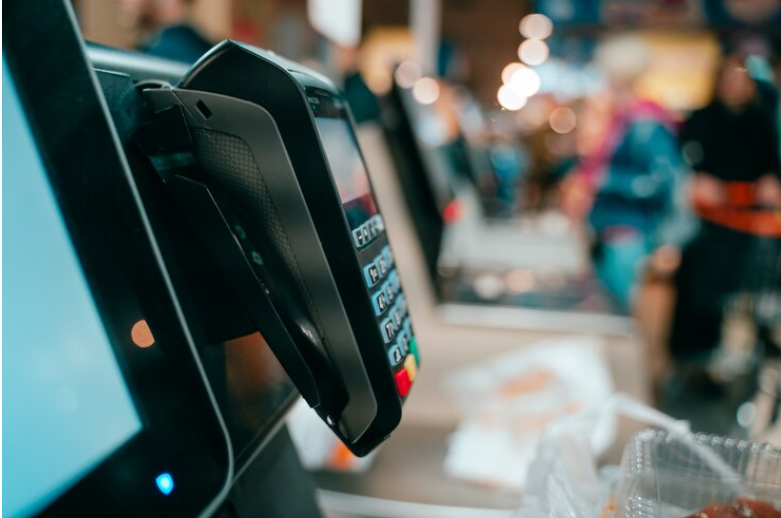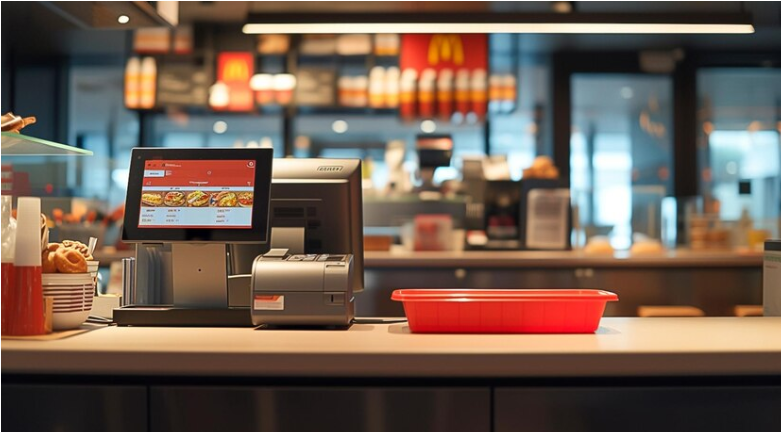In the fast-paced world of convenience stores, a seamless payment experience can make all the difference. Think about the last time you stopped in to pick up a drink or snack and were in and out without a hitch. The right payment processing setup keeps customers happy and businesses moving, especially in the convenience store industry, where every second counts.
If you’re running a small convenience store, the choice of credit card machines and payment terminals matters. But with so many options out there, from countertop terminals to mobile credit card readers, knowing which ones best suit your store can be tricky. In this guide, we’ll break down the essentials, show you how these devices work, and highlight why the right choice can improve your store’s bottom line.
What Are Retail Terminals and Credit Card Machines?
In simplest terms, credit card machines and terminals are devices that process electronic payments, like credit and debit card transactions. These machines not only capture card details but also securely communicate with the cardholder’s bank to approve (or deny) the purchase. It all happens in seconds, making checkout convenient for everyone involved.
Here’s what most credit card machines offer:
- PIN Pad: Customers enter their PIN or authorize a payment through a tap, swipe, or chip insert.
- Screen: Shows the transaction total and confirmation.
- Card Reader: Reads magnetic stripes or EMV chips based on the card type.
- Network Connection: Internet or phone line connection to process the payment.
- Printer: Many terminals have built-in printers, or connect externally, allowing for receipt printing or digital receipt options.
For small convenience store owners, choosing the right type means picking the features that align with store needs and customer habits. Some stores may benefit from advanced mobile terminals with touchscreens, while others just need the basics—a card reader and printer.
How Do Credit Card Machines Work?
Let’s walk through the payment process, step by step:
- Customer Presents Payment: This can be via swipe, chip insert, or contactless tap.
- Data Transfer: The terminal securely sends the payment details to the processor over a network (wired, WiFi, or Bluetooth).
- Authorization: The payment processor forwards the request to the cardholder’s bank, which quickly verifies the account.
- Approval or Denial: The terminal then displays an approval or decline notification. If approved, the transaction is complete.
A fun fact: on average, a complete card transaction takes just 2-3 seconds. For convenience stores that process hundreds of transactions a day, this kind of efficiency keeps lines moving and customers satisfied.
Types of Retail Terminals and Credit Card Machines
1. Countertop Terminals
- Best for: Fixed checkouts in a single location.
- Features: Standard card readers, PIN pads, and screens.
- Pricing: Typically ranges from £80-£250.
- Pros: Simple to use, reliable for face-to-face transactions. Newer models include contactless (NFC) options for tap-to-pay.
2. Wireless Credit Card Machines
- Best for: Stores that want to offer payment options curbside, in-aisle, or at additional counters.
- Features: Bluetooth, WiFi, or cellular connections; some with built-in printers, barcode scanners, and cameras.
- Pricing: £150-£450.
- Pros: Offers mobility, making it easier to serve customers anywhere in the store or even outside during high traffic.

3. POS Terminals with Card Readers
- Best for: Stores with medium to high sales volumes needing a full-service solution.
- Features: All-in-one setup with POS software, touchscreen, cash drawer integration, and more.
- Pricing: Higher end, from £500 upwards.
- Pros: Complete package with industry-specific tools like stock tracking and customer profiles.
4. Mobile Credit Card Readers
- Best for: Flexible and budget-friendly option for smaller stores or outdoor sales.
- Features: Small device, usually attached to a smartphone or tablet.
- Pricing: Low cost, starting from free for basic models.
- Pros: Ideal for transactions on the go. Mobile credit card readers are often preferred by convenience stores with pop-up setups at events.
How to Choose the Right Terminal for Your Convenience Store
Your store is unique, and the payment equipment should reflect that. Here are some key points to help you decide:
- Business Model: If you operate in one location, countertop models are cost-effective. But if you’re doing mobile sales, say, at events or busy locations, a wireless credit card machine or mobile reader will suit you better.
- Processing Volume: High-traffic stores should go for POS terminals with speedy processors and wireless connections. Consider that terminals with faster processing times, say 2 seconds versus 4 seconds, could save hours over a month.
- Payment Methods: Some 74% of UK consumers prefer to pay via contactless. Opt for a terminal with NFC technology to keep up with the trend.
- Portability: If you offer outdoor or curbside pickup, ensure the machine has a long battery life and good WiFi or cellular connectivity.
- Security: PCI compliance is essential. Major brands like Clover and Pax offer secure machines with the latest fraud protection features, which is crucial for customer trust.
Popular Payment Terminal Options for Small Businesses
Several brands cater specifically to convenience stores and other small businesses:
- Clover: Known for intuitive, feature-rich terminals that sync with POS software.
- Verifone: Offers reliable countertop and wireless models.
- SwipeSimple: Affordable mobile card readers designed for small transactions, popular with market vendors.
- Dejavoo: Offers versatile machines that can handle all payment types, often sold through merchant account providers.
Each brand brings its own strengths, and many come with added features like stock management, customer insights, and customizable interfaces, all invaluable for convenience stores aiming to expand services.

Mobile POS as an Enhanced Retail Terminal Solution
For small convenience stores, MPOS systems offer the functionality of traditional retail terminals and card machines, with the added advantage of mobility and data integration. Unlike standard card readers, MPOS systems are designed to be comprehensive, combining payment processing with business management tools in one device.
- Streamlined Stock Management: Traditional terminals focus on transaction processing, but MPOS systems go further by integrating inventory management. Store owners can quickly access stock data at the counter, helping them avoid stockouts or overstocking. This feature is particularly useful in the convenience store setting, where ensuring a steady supply of fast-moving goods is critical to maintaining customer satisfaction.
- Enhanced Customer Experience with Flexibility: In peak times, MPOS systems empower staff to handle transactions anywhere in the store—curbside, in the aisle, or even while customers wait in line. This adaptability surpasses standard credit card machines, reducing wait times and improving the shopping experience. In this way, MPOS systems act as multi-functional retail terminals, enhancing customer service and optimizing workflow.
- Detailed Sales Insights for Strategic Decisions: Unlike basic credit card machines, which serve a single purpose, MPOS systems can collect and analyze sales data to provide insights into customer behavior, peak sales times, and stock trends. This data allows small business owners to make data-driven decisions on stock management, promotions, and staffing—ultimately boosting profit margins.
- Cost-Effective and Simple to Use: Affordability and ease of use make mPOS systems a practical choice for small businesses. With their user-friendly interface, mPOS systems eliminate the steep learning curve that can come with more traditional POS terminals, enabling staff to quickly get accustomed to the system.
Ultimately, MPOS systems offer a unique blend of the traditional credit card machine’s reliability and a retail terminal’s versatility. They’re not just for processing payments; they’re an integrated solution that can streamline operations, enhance the customer experience, and provide actionable business insights—all key factors for small businesses seeking to optimize their point-of-sale processes.
Investing in the Right Payment Solution
Choosing the right credit card terminal for your convenience store isn’t just about taking payments. The right setup improves the customer experience, boosts operational efficiency, and even supports store growth with features that go beyond transactions. From countertop terminals to mobile credit card readers, there are options to match any convenience store’s needs and budget.
For small stores in the UK, where competition is high, and customer expectations are rising, reliable payment technology is a worthy investment. And with solutions like MPOS, convenience stores are more equipped than ever to handle both everyday transactions and seasonal surges with ease.
So, whether you’re just starting out or upgrading your checkout experience, exploring the right payment hardware can be the key to better business and happier customers.



